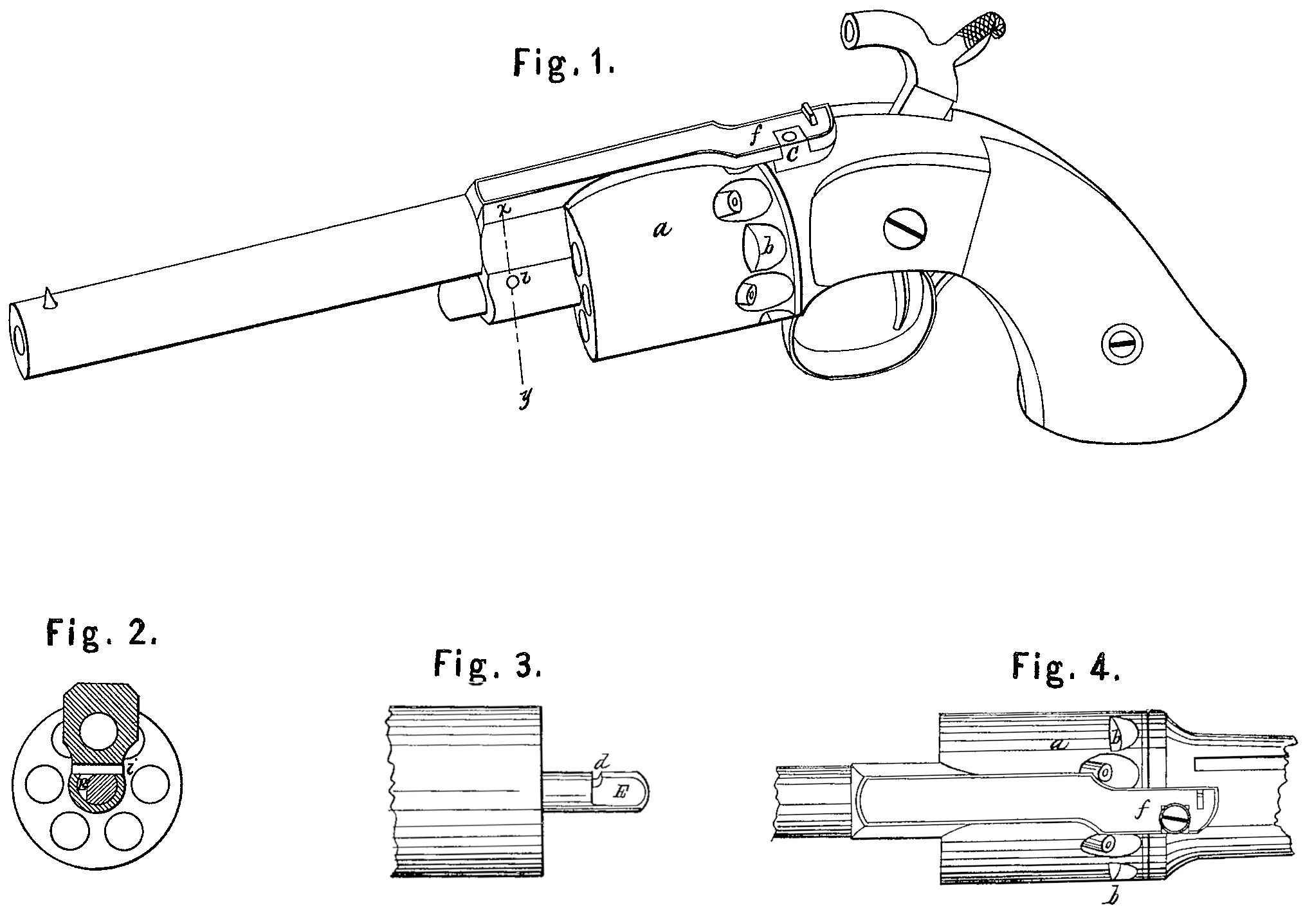US 8229
UNITED STATES PATENT OFFICE.
JAMES WARNER, OF SPRINGFIELD, MASSACHUSETTS.
IMPROVEMENT IN REVOLVING-BREECH FIRE-ARMS.
Specification forming part of Letters Patent No. 8,229, dated July 15, 1851.
To all whom it may concern:
Be it known that I, James Warner, of Springfield, county of Hampden, State of Massachusetts, have invented certain Improvements in the Construction of Repeating Fire-Arms; and I do declare the following to be a full, clear, and exact description of the same, reference being made to the annexed drawings, forming part of the same, in which—
Figure I is a view in perspective of my improvements. Figs. II, III, and IV are parts in detail; and similar letters refer to similar parts throughout the figures.
My invention relates to certain improvements in revolving arms, whereby a superior method is attained of effecting the attaching and detaching of the barrels from their stocks.
My invention consists in the engagement and disengagement of the barrel from the stock. This is effected with great facility in my improvements by merely slackening up a screw in the stock, attached near the end of the back strap of the barrel, when a quarter-revolution of the barrel will immediately release it from the stock. To accomplish this I affix a stud, c, having a square head, upon the stock. This stud is placed a little to one side of the central line or sight of the piece. In the side of the back brace-piece or strap, f there is a notch cut to fit around the pin c, as clearly shown in Figs. I and IV. The top of the pin is flash with the surface of the brace, and has besides a hole drilled and tapped to receive a screw. This screw is seen in Fig. IV, and when screwed down its head, being larger than the top of the stud, presses upon the strap and prevents any movement of the barrel. The barrel outside of the revolving chamber is supported upon the end of the pin upon which they revolve by means of the hole drilled in the lower end of the brace. In the old mode, to keep this part steady a hole is drilled through both the brace and pin and a key or screw inserted. My fastening differs from this. The end of the shaft is cut with a notch, as seen in Fig. III at letter D. One side of the pin is them cut to form a flat surface extending from the notch out to the end, as seen at e, Figs. II and III. A small pin is driven through the brace at i, Figs. I and II, and firmly riveted in it, so that it cannot be moved. When the barrel is set in place this pin i fills the notch d, and consequently, together with the stud c, holds the barrel in place.
To remove the barrel the screw on c must be slightly slackened, as it is not necessary to take it out, and the barrel being turned round until the little pin i comes opposite to the place where the notch is cut away at e, it can then be pulled off. The stud c being a little to one side of the sight, the side of the strap f, in being turned slightly, rises up. The head of the screw therefore must be raised sufficiently to allow the strap to pass from under. Therefore, when screwed hard down, it prevents the barrel from turning or being misplaced.
What I claim as of my own invention, and desire to secure by Letters Patent of the United States, is—
The arrangement for securing the barrel to the stock— viz., the combination of the stud c with the notch in the back strap, f, and with the notch d and pin i, as described, the whole being constructed and operating substantially as set forth herein.
JAMES WARNER.
Witnesses:
Lewis Foster,
C. A. Fisk.

